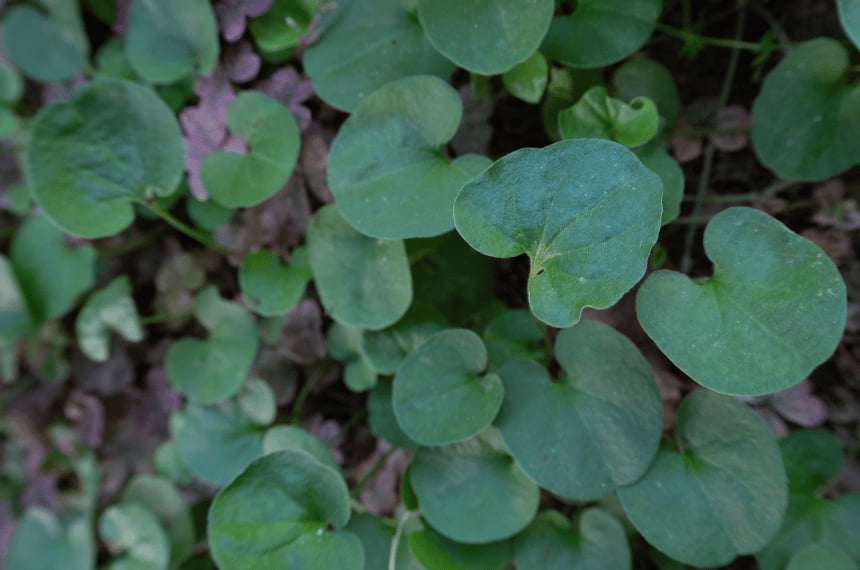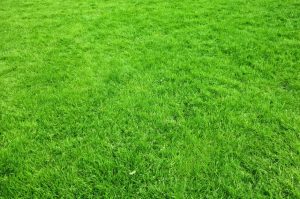If you’re searching for an alternative to the typical grass lawn, you might have come across dichondra. This low-growing and shade-loving ground cover is becoming popular for lawns, especially in warm climates such as Australia. However, like any landscaping option, there are pros and cons to consider. In this article, we’ll explore the benefits and drawbacks of dichondra lawns so you can decide if it’s the right choice for your property.
What is Dichondra?
Also commonly known as Kidney weed due to the shape of its leaves, dichondra (Dichondra micrantha) is a perennial plant native to Australia and New Zealand.
Dichondra is known for its low-growing habit and unique appearance, featuring small, round leaves and a vibrant green colour.

Pros of Dichondra
There are several benefits to using dichondra in landscaping and gardening, including:
- Low maintenance: Dichondra requires little maintenance once established, making it a great choice if you want a beautiful lawn or ground cover without the hassle of frequent mowing, watering or fertilising.
- Drought tolerance: Dichondra is a drought-tolerant plant, which means it can survive periods of dry weather without being watered. This makes it a good choice for areas that experience hot, dry summers.
- Aesthetic appeal: Dichondra has a lush, green appearance that can add beauty and texture to landscaping projects. Its low-growing habit makes it an excellent choice for creating a green carpet-like effect in lawns or garden beds.
- Soil stabilisation: The dense mat of foliage created by dichondra can help stabilise soil, preventing erosion and promoting healthy soil structure.
- Versatility: Dichondra can be used in various landscaping applications, from covering large areas of ground to filling in gaps between stepping stones or pavers.
In sum, dichondra is a versatile and low-maintenance plant that can add beauty and function to any landscaping project you may have in mind.
Cons of Dichondra
While dichondra has several benefits, there are also some drawbacks you should consider when using this plant in landscaping and gardening:
- Poor cold tolerance: Dichondra is sensitive to cold temperatures and can be damaged or killed by frost if not properly established. Consequently, we recommend avoiding this if you’re in an area that experiences long, cold winters.
- Susceptible to pests and diseases: Dichondra is vulnerable to several pests and diseases, including aphids, spider mites, and powdery mildew. As a result, this will require regular maintenance and monitoring to keep it healthy.
- Slow to establish: Dichondra can be slow and may take several weeks or months to form a dense mat of foliage. This can be frustrating for those who want to see quick results in their landscaping projects.
- Requires good drainage: Dichondra prefers well-draining soil and can suffer if planted in too wet or waterlogged soil.
- Can be invasive: While not considered a major weed, dichondra can become invasive if not properly managed. It can spread quickly and take over other plants if not regularly maintained.
Correspondingly, it is clear that dichondra has many benefits, but it is important to consider the potential drawbacks before deciding to use it in landscaping or gardening projects. Proper maintenance and care can minimise these issues and ensure the best results.
What goes well with dichondra?
We find that dichondra works best when completed with other plants or landscaping elements. To help with some inspiration, here are some plants and design features that pair well with dichondra:
- Other ground covers: Dichondra can be used as a ground cover plant with other low-growing plants such as creeping thyme, sedum, or ajuga. This can create a beautiful, textured carpet effect in a garden or lawn.
- Stepping stones or pavers: Dichondra can be planted between stepping stones or pavers to create a natural-looking pathway. This can help soften the hardscaping and add a lush, green element.
- Water features: Dichondra can soften the edges of water features such as ponds or fountains. Its low-growing habit and lush foliage can create a beautiful, natural transition from the water to the surrounding landscape.
- Container gardens: Dichondra can be planted in containers or hanging baskets alongside other plants, such as petunias, lobelia, or geraniums. Its trailing habit can add a beautiful cascading effect to the design.
- Rock gardens: Dichondra can be used in rock gardens alongside other low-growing plants and succulents. Its green foliage can help soften the harsh lines of the rocks and add a natural element to the design.
What time of year do you plant dichondra?
The best time to plant dichondra in Australia depends on the climate and region. Generally, dichondra should be planted during the warmer months of the year when the soil temperature is consistently above 15°C, and the soil has adequate moisture. In most parts of Australia, this means planting dichondra in the spring or early summer.
In Australia’s warmer and tropical regions, dichondra can be planted year-round if sufficient water and the soil temperature are warm enough. However, in cooler regions, it is best to avoid planting dichondra in winter when temperatures drop below freezing.
Before planting dichondra, it is important to prepare the soil by removing weeds, rocks and other debris and adding organic matter such as compost or well-rotted manure. This will help ensure that the soil is fertile and well-draining, which is important for the growth and health of dichondra.
How long does dichondra take to establish?
Depending on the growing conditions and planting method, dichondra can take several weeks or even months to establish. As a general rule of thumb, you can expect to wait about 4-6 weeks for dichondra seeds to germinate and begin to grow.
However, it can take several months for dichondra to form a dense mat of foliage and become fully established.
The time it takes for dichondra to establish can also depend on soil temperature, moisture levels, and sunlight. In warm, moist conditions with plenty of sunlight, dichondra will typically establish more quickly. However, it may take longer for dichondra to become established in cooler or drier conditions.
Final considerations
Before planting dichondra, there are several important considerations to keep in mind to ensure the best results:
- Soil preparation
- Sunlight
- Watering
- Maintenance
- Climate
At the end of the day, dichondra is a great alternative to traditional grass lawns, offering a low-maintenance option for landscaping and gardening projects.
However, it’s important to prepare properly and understand the plant’s limitations before incorporating it into your backyard setup. With proper care, dichondra can provide a beautiful and functional lawn or ground cover that lasts for years!






